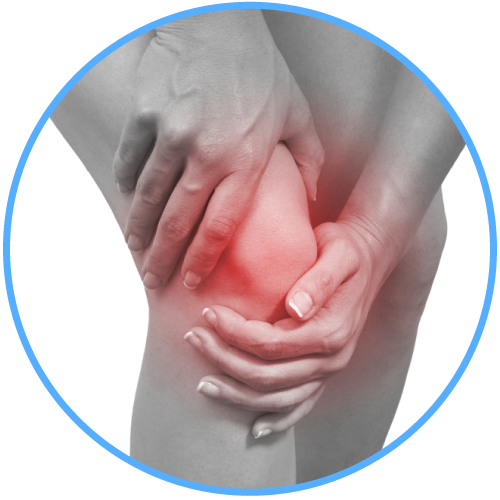
ACL
The anterior cruciate ligament runs diagonally in the middle of the knee. It stabilizes the tibia on the femur, as well as provides rotational stability to the knee. An anterior cruciate ligament injury is the over-stretching or tearing of the anterior cruciate ligament (ACL) in the knee. A tear may be partial or complete and caused by turning sharply or direct blow by another player.
Treatment for an ACL tear will vary depending upon the patient’s individual needs. It’s important to note that both non-surgical and surgical treatment of ACL injuries require physiotherapy.
- Exercises to improve balance, strength, co-ordination and proprioception
- Manual therapy treatments to increase the mobility in the tight structures
- Range of motion exercises
- Guided rehabilitation for gradual return to sport/activity
Knee Replacement
Your doctor may recommend knee replacement surgery if you have severe knee pain and disability from, osteoarthritis, or traumatic/sporting injury. A knee replacement can relieve pain and help you live a fuller, more active life.
Most patients begin exercising their knee the day after surgery. A physiotherapist will teach you specific exercises to strengthen your leg and restore knee movement to allow walking and other normal daily activities soon after your surgery.
- A graduated walking program to slowly increase your mobility, initially in your home and later outside
- Strengthening exercises to improve knee function
- Education about reducing the stress on the knees
Patella Tendinopathy
Patellar tendinopathy is an injury that affects the tendon connecting your kneecap (patella) to your shinbone. Patellar tendinopathy is most common in athletes whose sports involve frequent jumping – for this reason, patellar tendinopathy is commonly referred as jumper’s knee. Typical physiotherapy treatment includes
- Stretching and strengthening exercises
- Soft tissue techniques to release the painful structures
Knee arthroscopy
Your surgeon can use arthroscopy to feel, repair or remove damaged tissue. To do this, small surgical instruments are inserted through other incisions around your knee. We can guide you through a quick, safe and tailored post-operative rehabilitation programme to get you back to your previous levels of function or sport.
Osgood Schlatter’s
Osgood–Schlatter disease (OSD) is an inflammation of the patellar ligament at the tibial tuberosity. It is characterized by a painful lump just below the knee due to too much load and repetitive forces going through the patellar ligament. This is typically seen in children from 12 years onwards when they are playing increased levels of sport along with a growth spurt. Rehabilitation includes a reduction in training and a graded loading programme specifically designed for the type of sport or demand the person will need.



